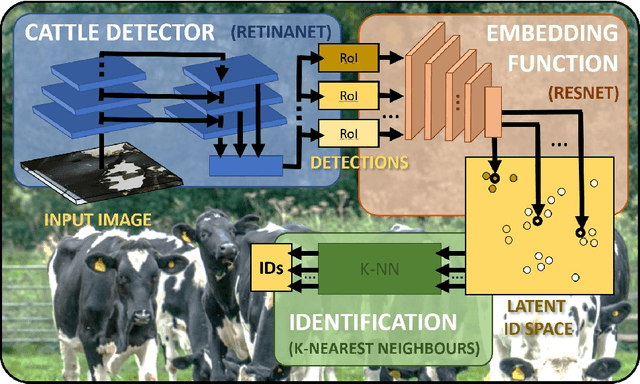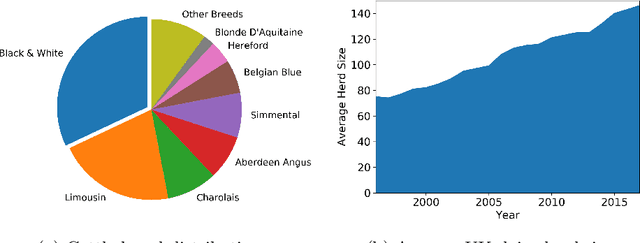Visual Identification of Individual Holstein-Friesian Cattle via Deep Metric Learning
Paper and Code
Jul 04, 2020



Holstein-Friesian cattle exhibit individually-characteristic black and white coat patterns visually akin to those arising from Turing's reaction-diffusion systems. This work takes advantage of these natural markings in order to automate visual detection and biometric identification of individual Holstein-Friesians via convolutional neural networks and deep metric learning techniques. Existing approaches rely on markings, tags or wearables with a variety of maintenance requirements, whereas we present a totally hands-off method for the automated detection, localisation, and identification of individual animals from overhead imaging in an open herd setting, i.e. where new additions to the herd are identified without re-training. We propose the use of SoftMax-based reciprocal triplet loss to address the identification problem and evaluate the techniques in detail against fixed herd paradigms. We find that deep metric learning systems show strong performance even when many cattle unseen during system training are to be identified and re-identified - achieving 98.2% accuracy when trained on just half of the population. This work paves the way for facilitating the non-intrusive monitoring of cattle applicable to precision farming and surveillance for automated productivity, health and welfare monitoring, and to veterinary research such as behavioural analysis, disease outbreak tracing, and more. Key parts of the source code, network weights and underpinning datasets are available publicly.
 Add to Chrome
Add to Chrome Add to Firefox
Add to Firefox Add to Edge
Add to Edge